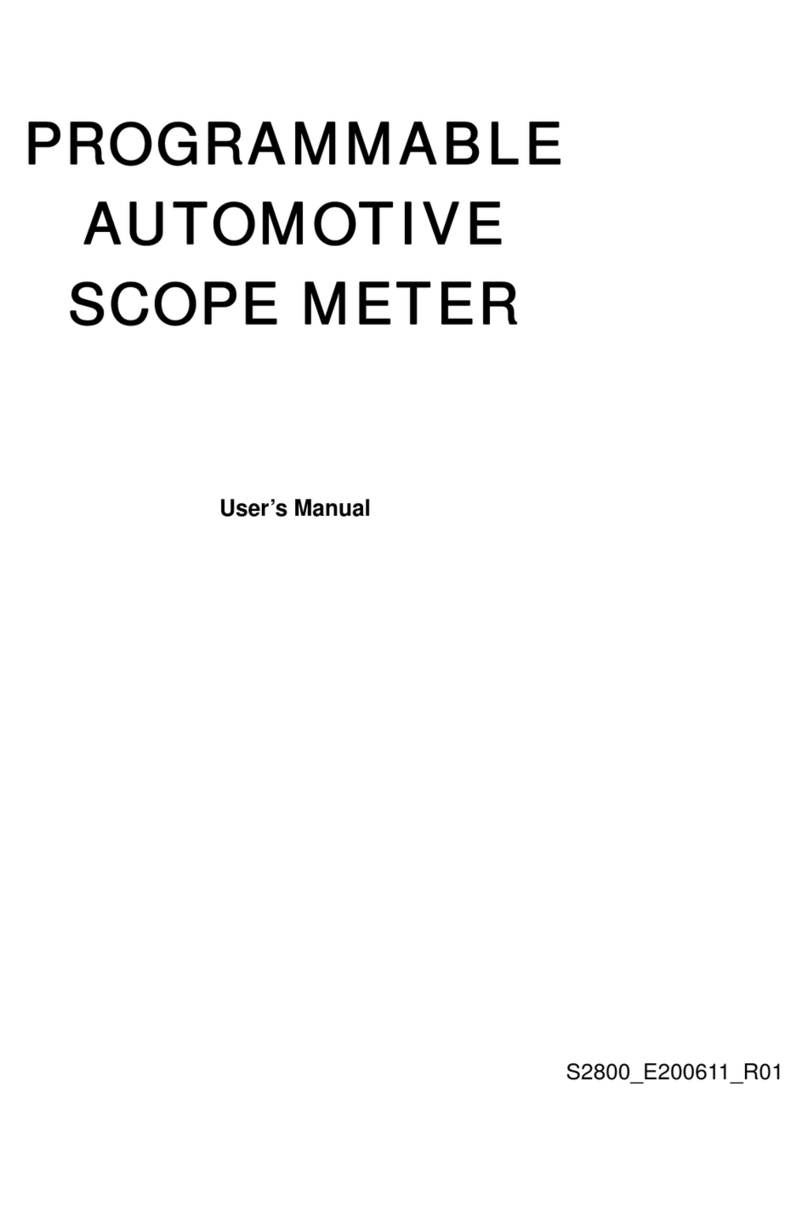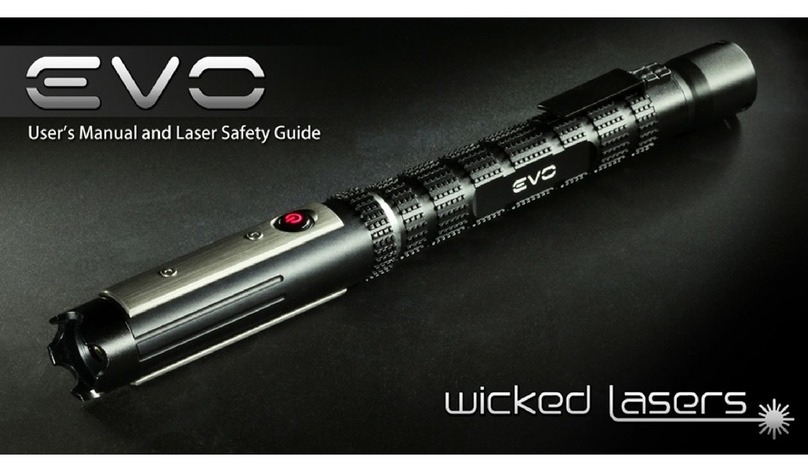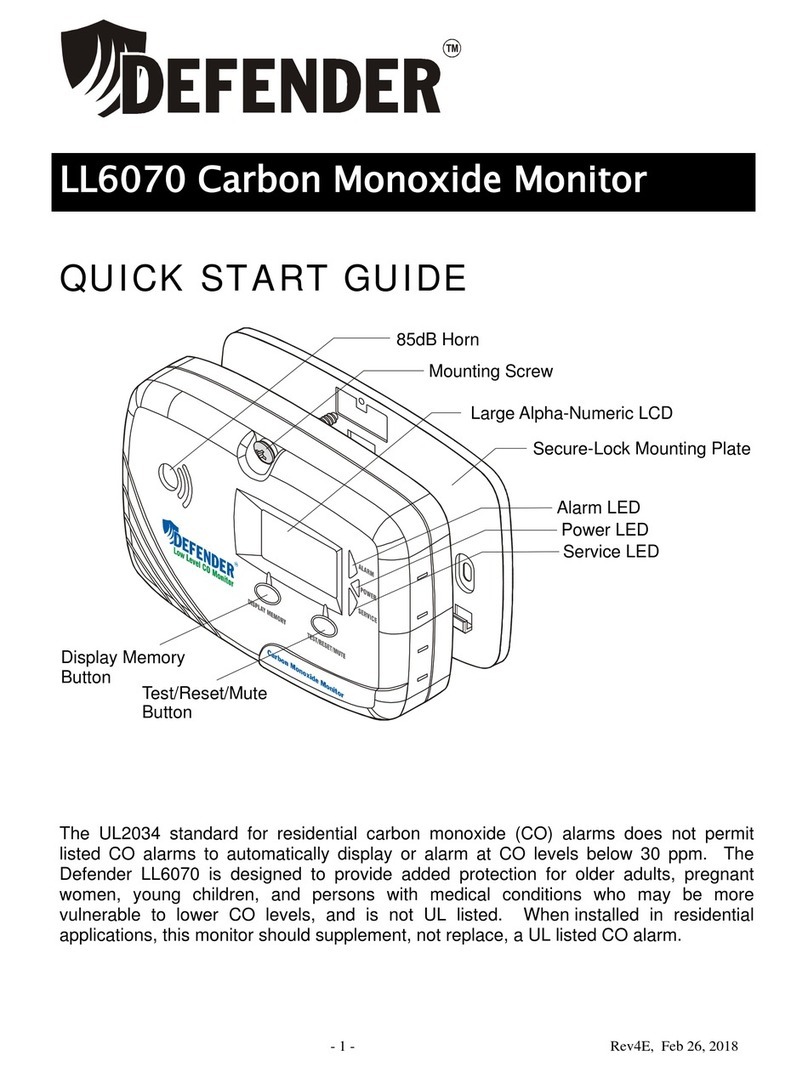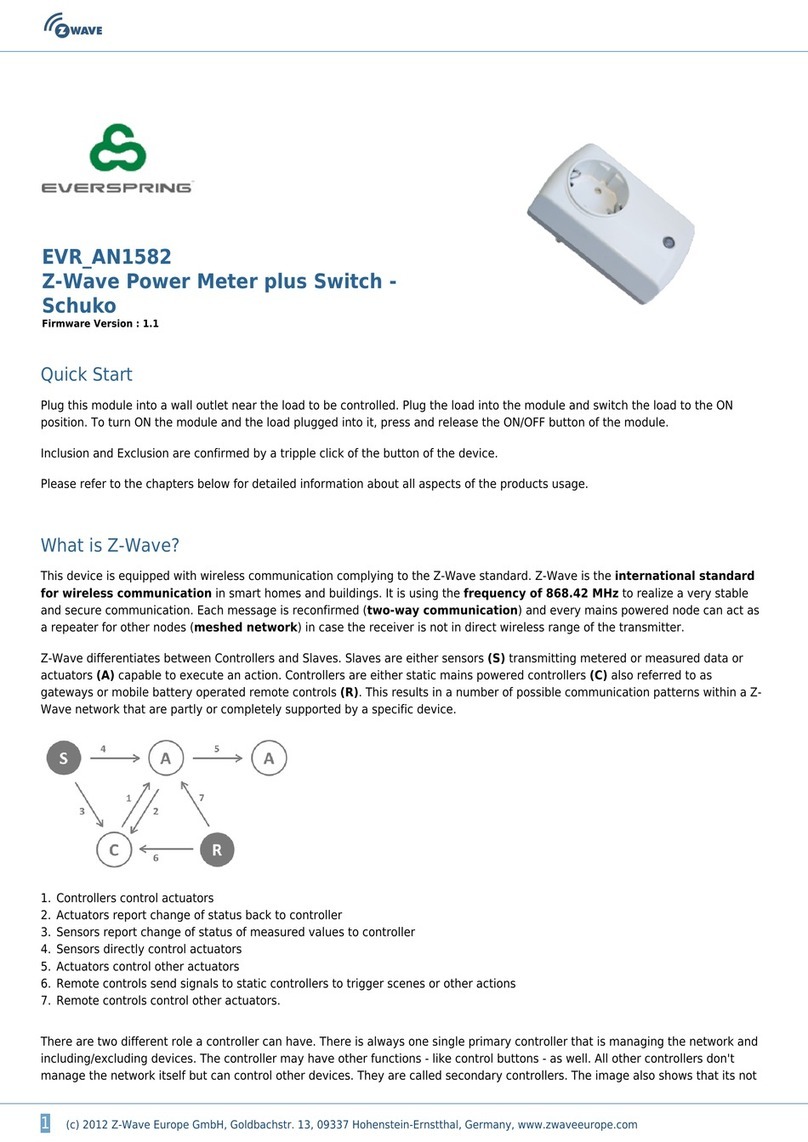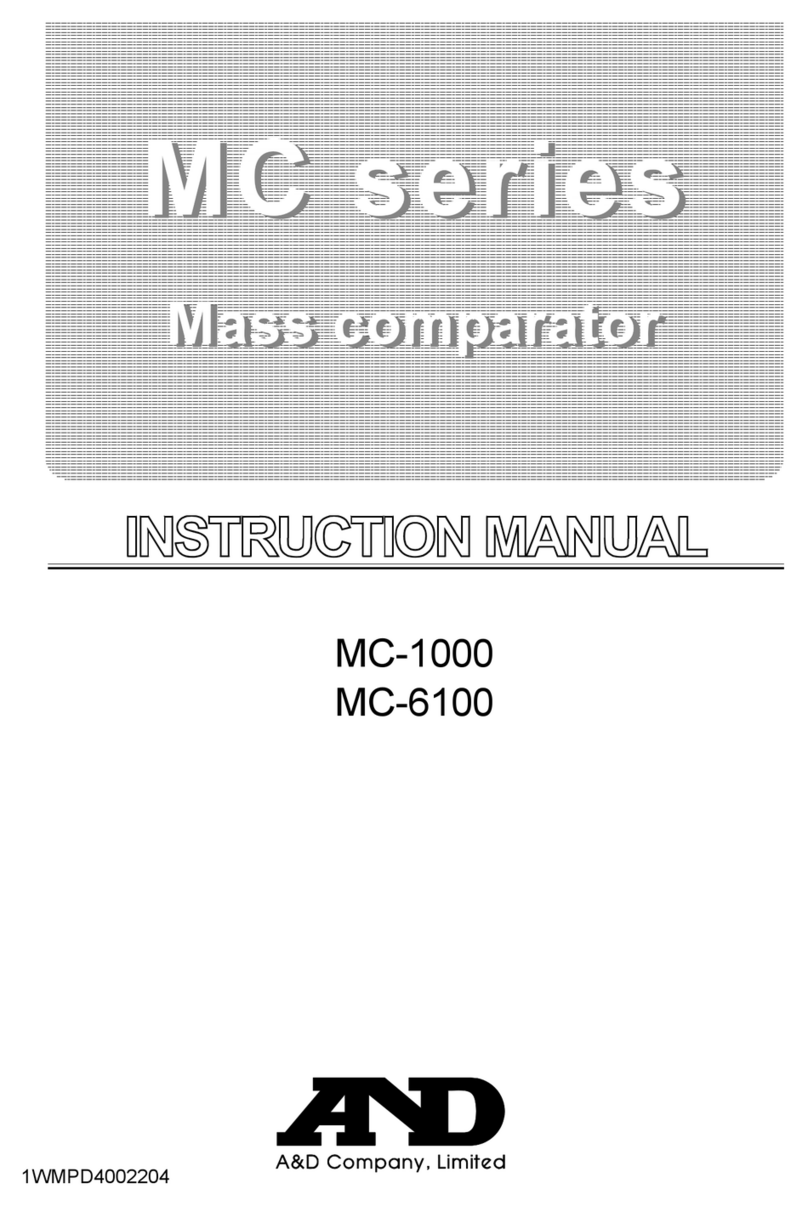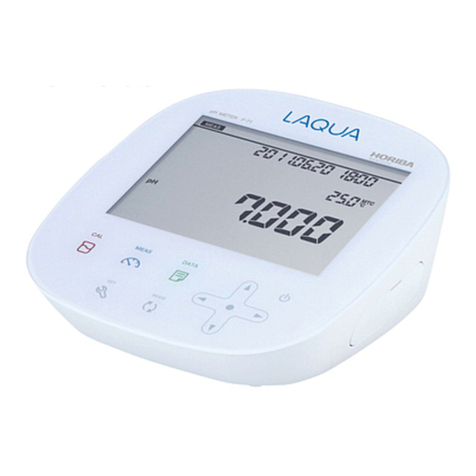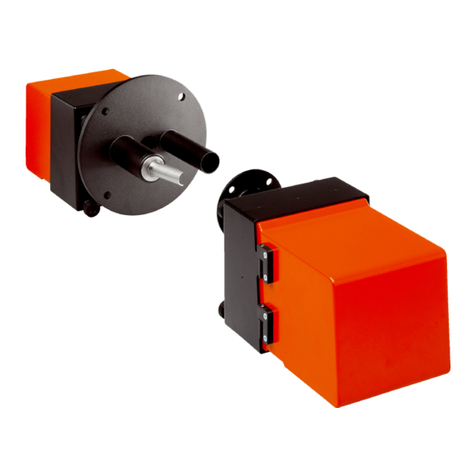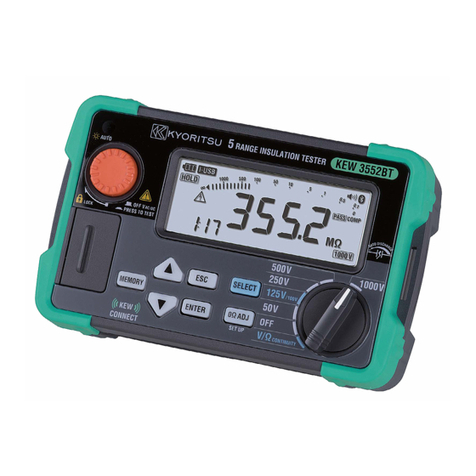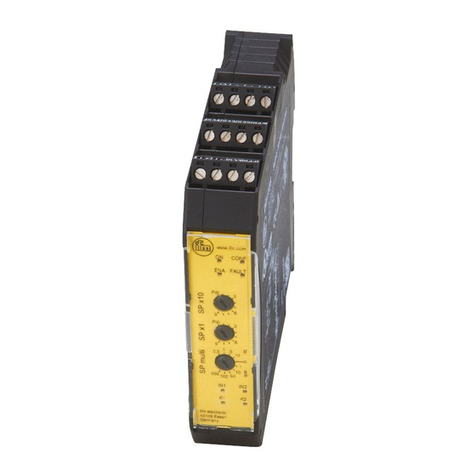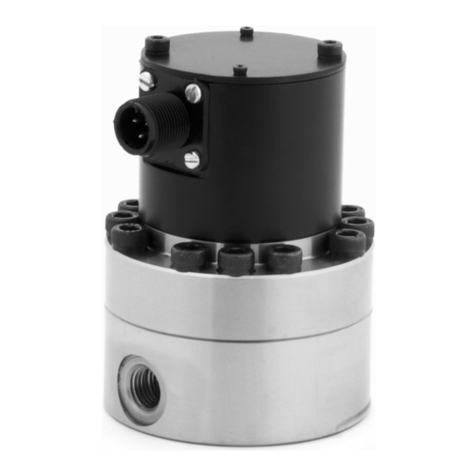Seintek S2401 User manual

SERVICE MANUAL
for
SCOPE METER
S2480_E040404_R01

Programmable
Handy Scope Series

i
LIMITED WARRANTY & LIMITATION OF LIABILITY
Each Seintek product is warranted to be free from defects in material
and workmanship under normal use and service. The warranty period
is one year and begins on the date of shipment. Parts, product repairs
and services are warranted for 90 days. This warranty extends only to
the original buyer or end-user customer of a Seintek authorized
reseller, and does not apply disposable batteries or to any product
which, in Seintek’s opinion, has been misused, altered, neglected or
damaged by accident or abnormal conditions of operation or handling.
Seintek warrants that software will operate substantially in accordance
with its functional specifications for 90 days and that it has been
properly recorded on non-defective media. Seintek does not warrant
that software will be error free or operate without interruption.

ii
Contents
1. Introduction and Specifications............................................. 1-1
1.1. Main Features ............................................................... 1-1
1.2. Unpacking the Test Tool Kit ........................................... 1-2
1.3. Specification .................................................................. 1-3
1.3.1. General Specifications ......................................... 1-3
1.3.2. Technical Specification......................................... 1-4
2. General Maintenance .............................................................. 2-7
2.1. Introduction.................................................................... 2-7
2.2. Warranty Repairs and Shipping Information ................. 2-7
2.3. Static Safe Handling...................................................... 2-7
2.4. Cleaning ........................................................................ 2-7
2.5. Disassembly Procedures .............................................. 2-8
2.5.1. Remove the Meter Case.................................... 2-10
2.5.2. Remove Rubber button and Battery Pack ......... 2-10
2.5.3. Separate SUB and Main PCB Assembly ............2-11
2.5.4. Remove LCD Cover............................................2-11
2.6. Assembly Procedures ................................................. 2-12
2.6.1. Layout for LCD Assembly .................................. 2-12
2.6.2. Layout for Scope Assembly ............................... 2-13
3. Performance Testing ............................................................... 3-1
3.1. Introduction.................................................................... 3-1
3.2. Required Test Equipment.............................................. 3-1
3.3. Performance Tests ........................................................ 3-1
3.3.1. Scope center Tests .............................................. 3-1
3.3.2. DCV Tests ............................................................ 3-2
3.3.3. ACV Tests ............................................................ 3-2
3.3.4. OHM Tests ........................................................... 3-3
3.3.5. Frequency Tests................................................... 3-3
3.3.6. AC/DC Coupling Tests ......................................... 3-3
3.3.7. External Tests ...................................................... 3-4
3.3.8. CHB Tests ............................................................ 3-4
3.3.9. Duty Tests ............................................................ 3-4
3.3.10. Pulse Width Tests ................................................ 3-4
3.3.11. RS232 Input and Tests......................................... 3-5

iii
4. Calibration................................................................................ 4-6
4.1. Introduction.................................................................... 4-6
4.2. Preparation before Entering Calibration Mode.............. 4-6
4.2.1. Voltage test .......................................................... 4-6
4.2.2. Setting for RS232C.............................................. 4-6
4.3. Entering Calibration Mode............................................. 4-7
4.4. Calibration Scope Center .............................................. 4-7
4.5. Calibration zero point of DMM function......................... 4-8
4.5.1. DC Volts Calibration............................................. 4-8
4.5.2. AC Volts Calibration............................................. 4-8
4.5.3. Ohms Calibration ................................................. 4-9
4.5.4. Frequency Calibration.......................................... 4-9
4.6. Exiting Calibration Mode ............................................... 4-9
5. List of Replaceable Parts........................................................ 5-1
5.1. Introduction.................................................................... 5-1
5.2. How to Obtain Parts ...................................................... 5-1
5.3. How to Contact Seintek................................................. 5-2
5.4. Newer Instruments ........................................................ 5-2
5.5. Parts .............................................................................. 5-2
6. Schematic Diagrams ............................................................... 6-1
6.1. S2401 & S2800 ............................................................. 6-1
6.1.1. Main PCB Assembly ............................................ 6-1
6.1.2. SUB PCB Assembly............................................. 6-1
6.1.3. Analog.................................................................. 6-1
6.1.4. Digital ................................................................... 6-1
6.1.5. Channel A ............................................................ 6-1
6.1.6. Channel B ............................................................ 6-1
6.2. S2405 & S2505 ............................................................. 6-1
6.2.1. Main PCB Assembly ............................................ 6-1
6.2.2. SUB PCB Assembly............................................. 6-1
6.2.3. Analog.................................................................. 6-1
6.2.4. Digital ................................................................... 6-1
6.2.5. Channel A ............................................................ 6-1
6.2.6. Channel B ............................................................ 6-1
7. Troubleshooting ...................................................................... 7-1
7.1. Introduction.................................................................... 7-1

iv
7.2. Troubleshooting guide................................................... 7-1
7.3. Starting with a Dead meter............................................ 7-2
7.4. Can not install the software........................................... 7-2
7.4.1. Check the H/W and S/W requirement:................. 7-2
7.4.2. Error - Could not copy file…. ............................... 7-2
7.5. The back light is not working......................................... 7-3
7.5.1. Desoldering from EL terminal .............................. 7-3
7.5.2. Remove screw for LCD cover.............................. 7-3
7.5.3. Remove LCD cover.............................................. 7-4
7.5.4. Detail for EL terminal ........................................... 7-4
7.5.5. Insert electric wire between PCB and EL ............ 7-4
7.5.6. Layout for LCD Assembly .................................... 7-5
7.5.7. Install LCD cover.................................................. 7-5
7.5.8. Install screw for LCD cover.................................. 7-6
7.5.9. Soldering of EL terminal....................................... 7-6
7.5.10. Reassembly ......................................................... 7-6

1-1
1. Introduction and Specifications
1.1. Main Features
This Programmable Universal Scope Meter offers enhanced features
that similar type test instruments on the market today don't have.
All the functions are designed to be very convenient to use. You can
quickly get used to working with this METER and the great many
functions integrated inside. This instrument features:
1. RS-232C interface for transferring measurement data and
waveform.
2. Dual Channel and Auto Calibration.
3. Automatic setting for horizontal and vertical division.
4. DC to 5MHz(2405, 2505), 1MHz(2401, 2800) oscilloscope band
width.
5. Built-in auto ranging True-RMS digital MultiMeter
6. Auto ranging
7. Data hold and run mode.
8. Back light display and Low battery indication.
9. Display Type: Super-Twist 132 x 128 pixels.
10.Designed to comply with safety standard for UL3111, CSA C22.2
No.1010-1

1-2
1.2. Unpacking the Test Tool Kit
The following items are included in your test tool kit.
Note
When new, the rechargeable Ni-MH battery pack is not fully charged.
■STANDARD
Description S2401 S2405 S2505 S2800
Scope Meter ●●●●
Ni-MH Battery Pack (installed) ●●●●
Rechargeable Adaptor ●●●●
Test Leads & Alligator Clips (2) ●●●●
Users Manual ●●●●
Rubber Holster ●
Carrying case ●
RS-232 S/W & Cable ●
■OPTION
Description S2401 S2405 S2505 S2800
Rubber Holster ●●●
Carrying case ●●●
RS-232 S/W & Cable ●●●
Inductive Pickup ●
Capacitance Pickup ●
Secondary Adaptor ●
Note:
The accessories may be changed to improve the product quality
without notifying the customers.

1-3
1.3. Specification
1.3.1. General Specifications
1) Operational Temperature:
0°C to +50°C (+32°F to +122°F) at a relative humidity 75% or less
2) Storage Temperature:
-20°C to +60°C with a relative humidity of 75% less
3) Temperature Coefficient:
0.1 x (Specified Accuracy) per °C for temperature <18°C to >28°C
4) Max. Voltage between any Input and Ground: DC or AC 600Vrms
5) Basic DC Accuracy: 0.3%
6) Band width: 5MHz(2405, 2505), 1MHz(2401, 2800)
7) Meter AC Band width: 20kHz
8) Power Supply: Ni-MH Battery 4.8V (1.2V x 4 cell)
9) Battery Life Time:
4 Hours without Backlight on,
3 Hours with Backlight on.
10) Battery Change Time: About 3 Hours
11) Battery Change:
Class-2 transformer,
Input: 120V AC 60Hz or 240V AC 60Hz
Output: 9V DC 1A
12) Display Type: Super-Twist 132 x 128 pixels
13) Equipment Dimensions:
90 mm (width) x 195 mm (depth) x 40 mm (height)
14) Equipment Weight: About 460g

1-4
1.3.2. Technical Specification
1) Oscilloscope Function
(1) Horizontal
Sample Rate 25 MS/s (Dual CH mode)
50 MS/s (Single CH mode)
Record Length 512 single shot, 256 in all modes
Sample / Division 25
Modes Single shot, Roll, Normal
Accuracy 0.01%
Sweep Rate 1uS to 5S in 1, 2, 5 sequence
(2) Vertical
Bandwidth 1MHz
Resolution 8 Bit
Channels Dual
Coupling AC, DC
Input impedance 1 MΩ
Accuracy 3%
Max. Input Volts DC or AC 600Vrms
2401, 2800 0.5V to 500V in 1, 2, 5 sequence
Volt / Division 2405, 2505 50mV to 500V in 1, 2, 5 sequence
(3) Triggering
Type CHA, CHB, External
Coupling AC, DC
Slope Rising (↑) or Falling (↓) edge
Internal Trigger Sensitivity 2 / 20 Division
(4) Waveform Memory
2800 8 Shots
Waveform Memory Others 16 Shots
REF Wave From Memory 45 Shots (Only S2800)

1-5
2) Digital MultiMeter Function
DC V
Range Resolution Accuracy Impedance
5V 0.001V
50V 0.01V ±(0.3%+3)
500V 0.1V
1000V 1V ±(0.5%+5)
1 MΩ
AC V
Accuracy
Range Resolution 50~450Hz 0.45k~5kHz 5k~20kHz Impedance
3V 0.001V
30V 0.01V
300V 0.1V
±(2.5%+5)
750V 1V
±(0.75%+5) ±(2%+5)
N/A
1 MΩ
OHM
Range Resolution Accuracy Over Load Protection
5 kΩ0.001 kΩ
50 kΩ0.01 kΩ
500 kΩ0.1 kΩ
±(0.5%+5)
5 MΩ0.001 MΩ±(0.75%+10)
600V DC or
AC rms
Continuity Buzzer
Test Voltage Threshold Over Load Protection
1.7V 100 digits 600V DC or AC rms

1-6
Frequency
Range Resolution Accuracy Overload protection
100 Hz 0.01 Hz
1 kHz 0.0001 kHz
10 kHz 0.001kHz
100 kHz 0.01kHz
1 MHz 0.0001MHz
10 MHz (2405) 0.001MHz
±(0.05%+5) 600V DC
or AC rms
The guaranteed range is below 5 MHz.
RPM (S2401, S2405, S2505)
Range Resolution Accuracy
240 - 60,000 1 RPM ±(0.05%+5)
Pulse Width (S2401, S2405, S2505)
Range
2uS-500mS (Pulse Width > 2uS)
% Duty (S2401, S2405, S2505)
Range
25% - 75%
Only S2800
Function Range Resolution Accuracy
RPM 120 - 12,000 1RPM ± 2RPM
% Duty 1% - 98%
Dwell 3.6° - 352.8°
Pulse Width 2 uS - 450 mS (Pulse Width > 2 uS)
Frequency 2Hz - 1MHz

2-7
2. General Maintenance
2.1. Introduction
This provides handling, cleaning, battery replacement, disassembly,
and assembly instructions.
2.2. Warranty Repairs and Shipping Information
If your meter is still under warranty, see the warranty information at the
front of this manual for instructions on returning the unit.
2.3. Static Safe Handling
Observe the following rules for handling static-sensitive devices:
1. Handle all static-sensitive components at a static-safe work area.
Use grounded static control table mats on all repair benches, and
always wear a grounded wrist strap. Handle boards by their
nonconductive edges only. Store plastic, vinyl, and Styrofoam
objects outside the work area.
2. Store and transport all static-sensitive components and assemblies
in static shielding bags or containers.
Static shielding bags and containers protect components and
assemblies from direct static discharge and external static fields.
Store components in their original packages until they are ready for
use.
2.4. Cleaning
Warning
To avoid electrical shock or damage to the meter, never allow
water inside the case. To avoid damaging the meter’s housing,
never apply solvents to the meter.
If the meter requires cleaning, wipe it down with a cloth that is lightly
dampened with water or a mild detergent. Do not use aromatic
hydrocarbons, chlorinated solvents, or methanol-based fluids when
wiping the meter.

2-8
2.5. Disassembly Procedures
The following paragraphs describe disassembly of the Meter in
sequence (from the fully assembled meter to the Sub-assembly.) Start
and end your disassembly at the appropriate heading levels.
64
9
10
BATTERY
8
7
5
PC Cover
S2 EL
PCB
LCD
BATTERY
2
3
S1
S3
1
10
S4
Disassembly

2-9
No Description Q’ty
1 Top Case 1Pcs
2 Rubber Button 1Pcs
3 LCD Cover 1Pcs
4 LCD 1Pcs
5 EL 1Pcs
6 SUB PCB Assembly 1 Set
7 Main PCB Assembly 1 Set
8 Battery Pack 1Pcs
9 Bottom Case 1Pcs
10 Stand Top & Bottom 1Pcs
S1 Screw for Top and Bottom case 3Pcs
S2 Screw for Sub and Main PCB 4Pcs and 4Pcs
S3 Screw for LCD Cover 5Pcs
S4 Screw for Stand 1Pcs

2-10
2.5.1. Remove the Meter Case
S1
3 PCS
Use the following procedure
to remove the meter case.
①Power OFF
Make sure the meter is
turned off and unplugged
from the power Adaptor.
②Remove Screw:
Remove the three screw
from the bottom of the
case. (3 Pcs)
③Remove the PCB Ass’y:
Now remove the PCB
Assembly by releasing the
four snap retainers
securing it to the case.
2.5.2. Remove Rubber button and Battery Pack
Rotate the PCB Assembly
180 degrees.
①Remove Rubber Button:
②Remove Battery Pack:
Remove the battery plug
from the connector

2-11
2.5.3. Separate SUB and Main PCB Assembly
①Remove Screw:
Remove the four screw
from the Sub PCB
assembly. (4 Pcs)
②Separate PCB:
The SUB PCB Assembly
can now be lifted away
from the Main PCB
Assembly.
2.5.4. Remove LCD Cover
①Remove screw:
Remove the five screw for
LCD cover. (5 Pcs)
②Rotate the Sub PCB:
Rotate the SUB PCB
Assembly 180 degrees.
③Remove LCD Cover:
The LCD Cover can now
be lifted away from the
SUB PCB Assembly.

2-12
2.6. Assembly Procedures
Generally, assembly procedures follow a reverse sequence of
disassembly procedures. As some differences do apply, assembly is
described separately in the following paragraphs. Begin assembly at
the appropriate level, as defined by the heading. References are
made to items in below Figure for assembly details of standard meter
parts.
2.6.1. Layout for LCD Assembly
PCB
EL
LCD
PC Cover
①LCD Cover:
②LCD:
③EL:
④SUB PCB
We recommend that do not remove LCD from SUB PCB.

2-13
2.6.2. Layout for Scope Assembly
64
9
10
BATTERY
8
7
5
PC Cover
S2 EL
PCB
LCD
BATTERY
2
3
S1
S3
1
10
S4
Assembly

3-1
3. Performance Testing
3.1. Introduction
This chapter of the Service Manual provides performance tests that
can be used at any time to verify the meter operation within published
specifications. A complete calibration procedure is also included. The
performance test and, if necessary, the calibration procedure can be
performed periodically and after service or repair.
3.2. Required Test Equipment
The following equipment, or a suitable equivalent, is required for
performance testing and calibration:
Description Minimum requirements Examples
Multifunction Calibrator Refer to 4808 specification 4808
Multifunction Calibrator Refer to 9100 specification 9100
Arbitrary function generator Refer to HC9302
specification HC930
Function generator Refer to G5100 specification G5100
Power supply Refer to P6100 specification P6100
Resistance calibrator
Tool for a short circuit test
To test current and voltage
Personal Computer IBM computer
3.3. Performance Tests
The following performance tests are provided to ensure that the meter
is in proper operating condition.
3.3.1. Scope center Tests
1. Turn off the equipment and turn on the equipment.
2. Move to DCV (Press FUNC, F1 and then select DCV; then press
F3, F4, F4).
3. Press DIV button; then press the F1, Æ, F2, Æ, F3 and Æbutton
to change of A/Div,. B/Div and H/Div to AUTO mode.
This manual suits for next models
3
Table of contents
Other Seintek Measuring Instrument manuals
Popular Measuring Instrument manuals by other brands

Novus
Novus N1540-485 instruction manual
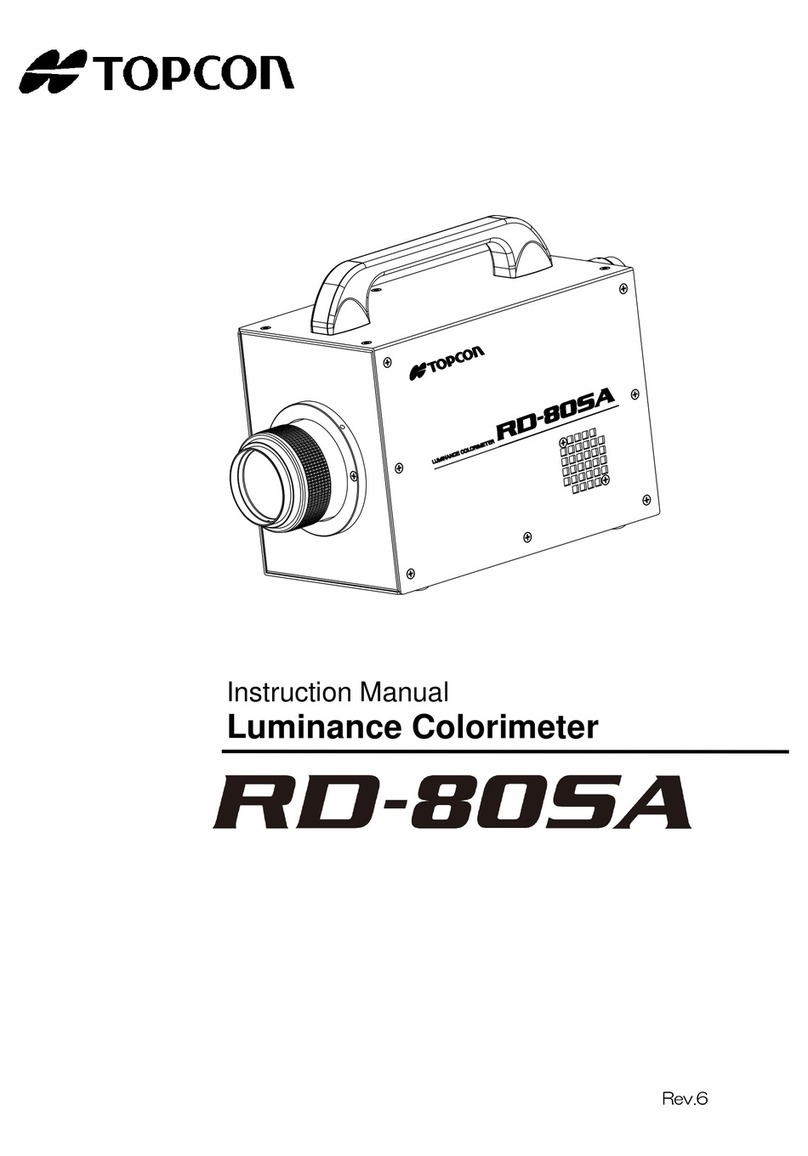
Topcon
Topcon RD-80SA instruction manual

Airport Lighting
Airport Lighting L-880 owner's manual
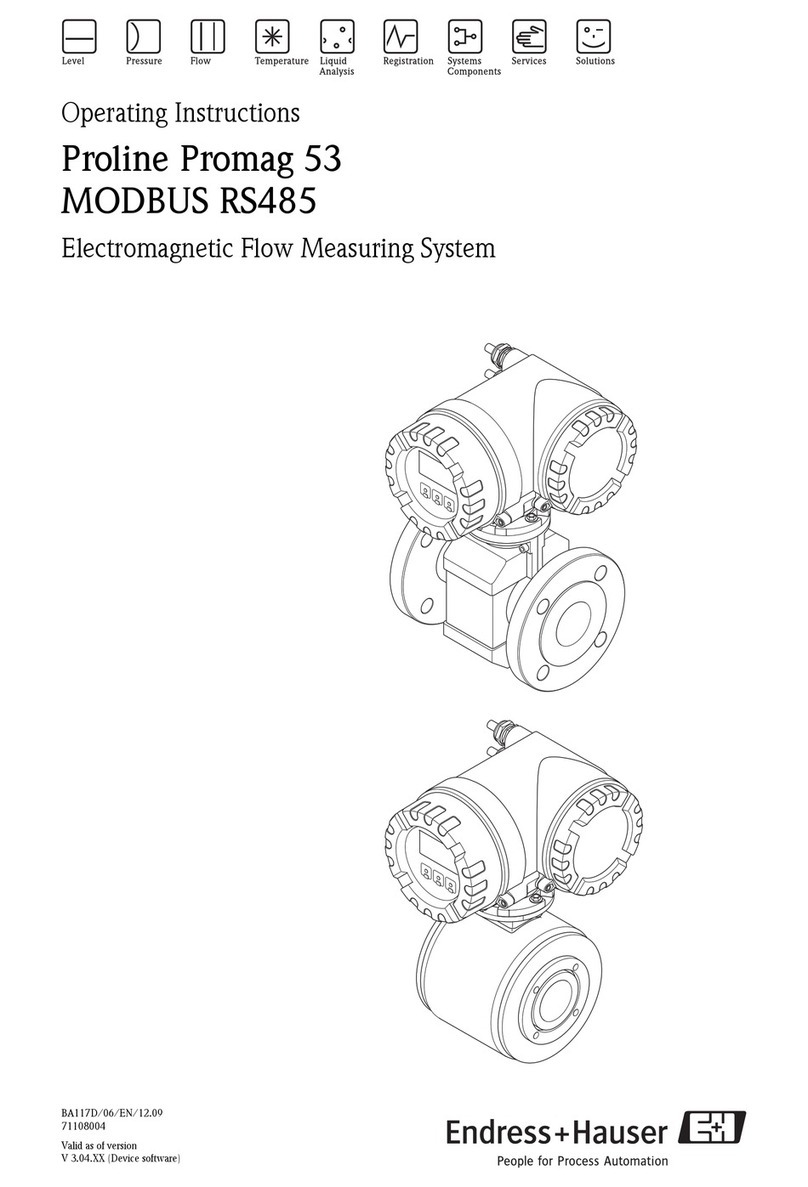
Endress+Hauser
Endress+Hauser MODBUS RS485 operating instructions

Teledyne Lecroy
Teledyne Lecroy MDA800A Getting started guide
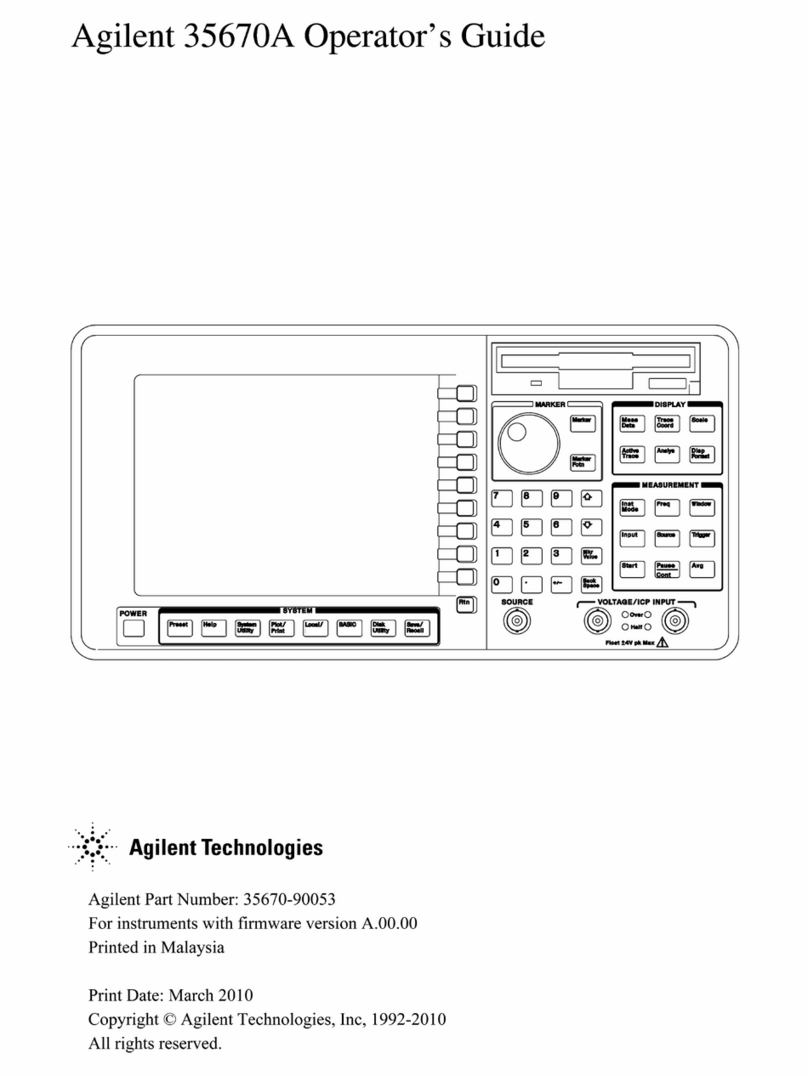
Agilent Technologies
Agilent Technologies 35670A Operator's guide
